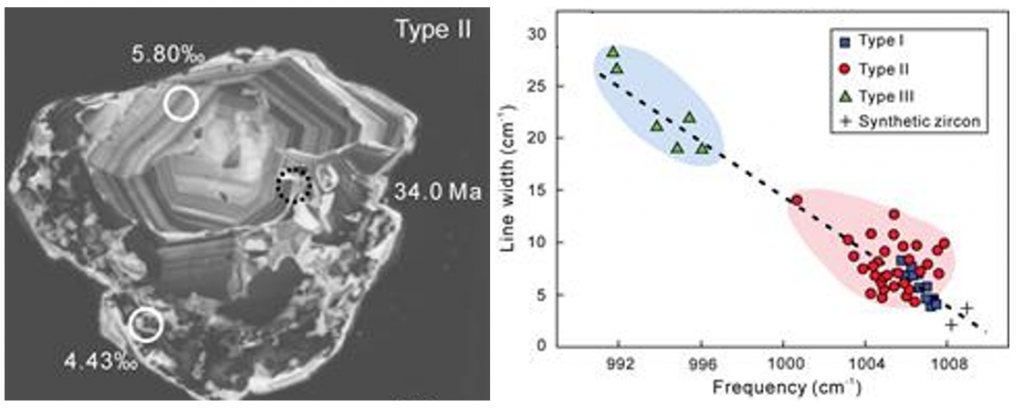Zircon alteration as a proxy for rare earth element mineralization processes in carbonatite-nordmarkite complexes of the Mianning-Dechang rare earth element belt, China
| Reviews and Highlights | Quantum Science | Molecular and Soft-matter | Ultrafast Nano-optics and Nanophotonics | Mineralogy and Geochemistry |
|---|
Yan Liu, Zengqian Hou, Rongqing Zhang, Ping Wang, Jianfeng Gao, and Markus B. Raschke
Economic Geology 114 , 719 (2019).
DOI PDF

Zircon is a common accessory mineral in igneous rocks, including carbonatite-nordmarkite complexes. Zircons can record radiation damage and hydrothermal alteration through changes in oxygen isotope values, crystal structures, and geochemical and petrographic characteristics. The Mianning-Dechang rare earth element (REE) belt in China hosts 12 carbonatite-nordmarkite complexes and related Cenozoic REE deposits. We investigated zircons from these nordmarkites to understand the formation of the REE deposits. Three types of zircon from fresh and altered nordmarkite were identified. Type I zircons are unaltered, type II zircons experienced fenitization associated with hydrothermal alteration, and type III zircons were strongly affected by ore-forming fluids and REE mineralization. Type III zircons have higher Th, U, light REE, and REE contents (43,100, 52,000, 7,420, and 9,000 ppm, respectively) than type I zircons (1,450, 8,100, 265, and 1,130 ppm, respectively) and type II zircons (1,370, 19,520, 334, and 1,210 ppm, respectively). Petrographic observations, Raman spectra, and geochemical characteristics show that from type I to III zircons the crystals experienced increased radiation damage, hydrothermal alteration, and metasomatism by ore-forming fluids and show a transition to hydrothermal zircon. Type I, type II, and type III zircons have Da T (alpha dose) values of 0.6 to 29.5, 7.1 to 207, and 64 to 687 a-decay events/mg, with averages of 12.7, 87.36, and 144 a-decay events/mg, respectively. In general, the radiation damage trend shows that the Raman frequency is ~995 cm-1, even at high levels of radiation damage. However, the Raman frequency of type III zircon can reach 991 cm-1 with a line width of 28 cm-1, indicating type III zircons have a lower degree of crystallinity than type I and II zircons as a result of the effects of additional alteration by ore-forming fluids rich in Th and U. The involvement of ore-forming fluids and influx of meteoric water into the magmatic water is evident from the δ18O values of type I, II, and III zircons of 5.15 to 8.65%, 1.50 to 6.24%, and 1.92 to 5.86%, respectively. U-Pb dating of type I zircons yields similar ages within a given deposit. Type II and III zircons could not be dated for the formation ages of REE deposits due to their high degree of alteration, abundant mineral inclusions, and variable common and radiogenic Pb contents. Given the chemical composition of the hydrothermal fluids and REE minerals, the geochemical characteristics of type III zircons suggest that highly evolved ore-forming fluids rich in Na, K, Ca, Cl, SO4, F, REEs, Th, U, Zr, Hf, and Pb facilitated zircon alteration. It is therefore concluded that the changes in zircon geochemistry and crystal characteristics could serve as a proxy for carbonatite-nordmarkite?related REE mineralization processes and as an indicator for REE exploration. A schematic model of the formation of type I, II, and III zircons and REE mineralization stages in the Mianning-Dechang REE deposits is presented.
